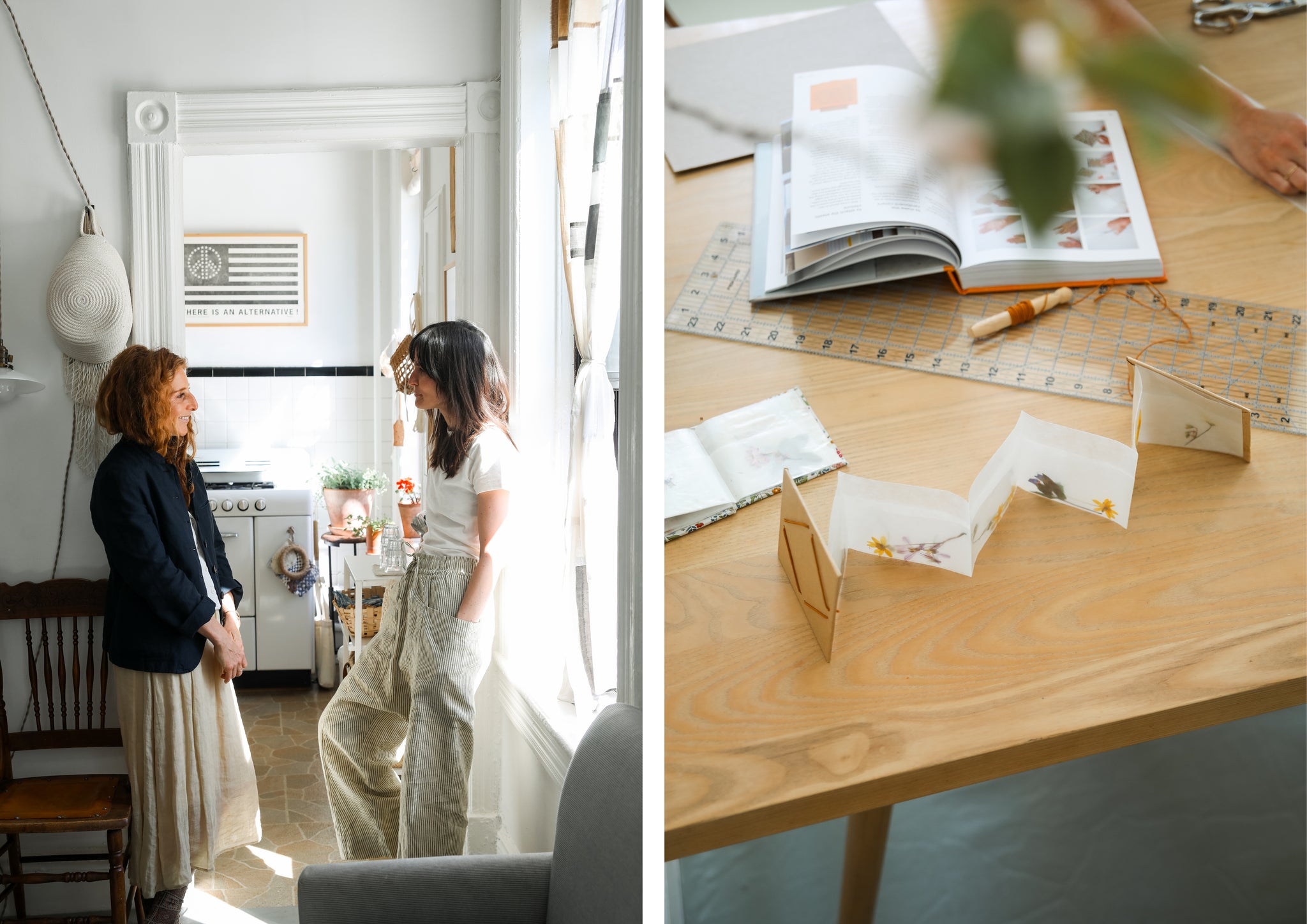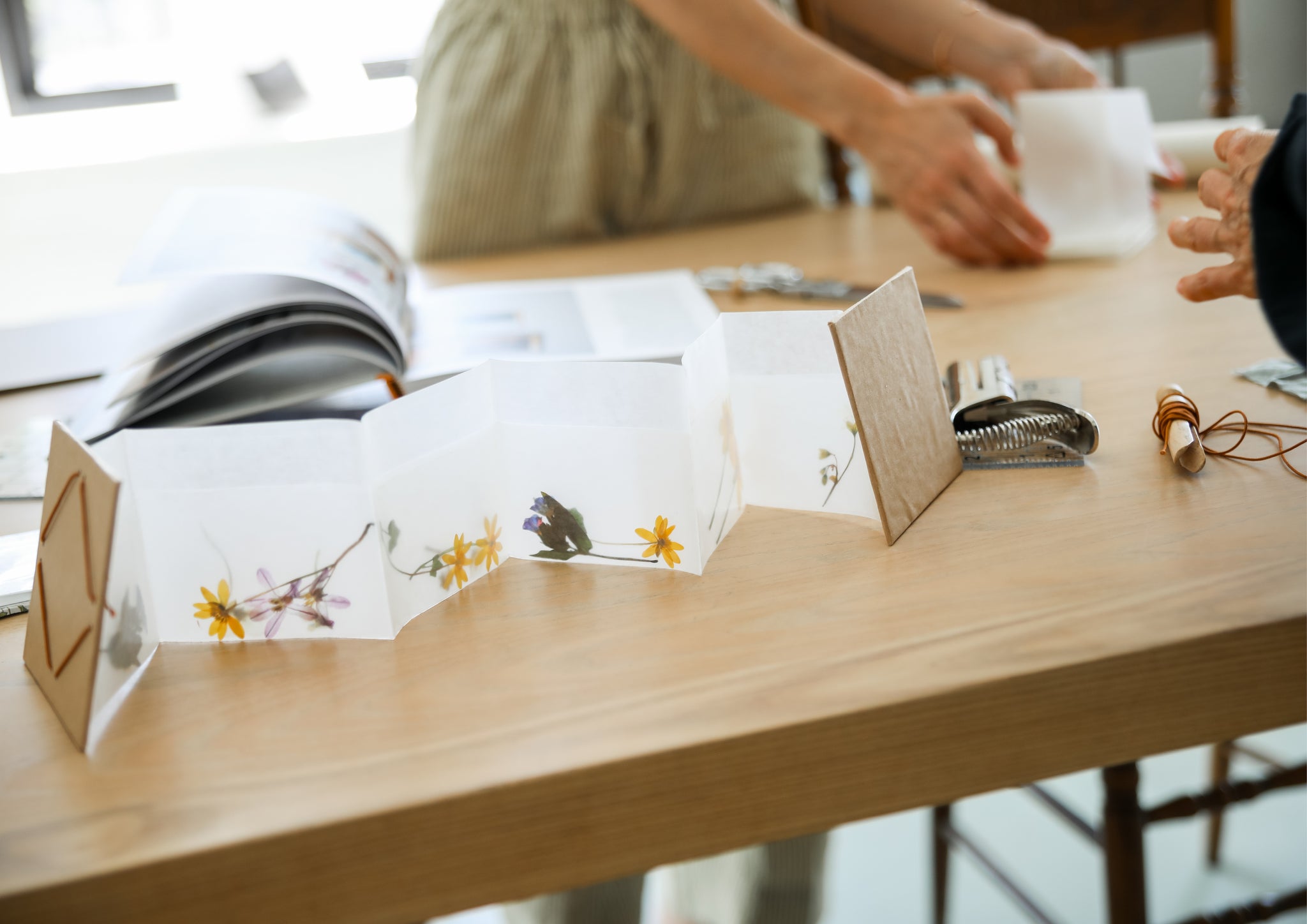
Crafting isn’t just about making tangible objects; it’s about reconnecting with creativity and finding joy in the process. This sentiment lies at the heart of Making Things, a new craft book by Rose Pearlman and Erin Boyle.
Erin and Rose’s collaboration began with distant admiration for each other’s work, despite only living two miles from each other in Brooklyn. Before meeting in 2018, artist and former TOAST New Maker Rose recognised shared values in writer Erin's blog Reading My Tea Leaves, which covers the intersection of sustainability, consumerism, and family. Erin appreciated Rose’s approach to rug making and the way she draws on a broad range of techniques and materials in her art and teaching. After making contact, the two began to share ideas and create content for the blog which eventually developed into a book concept. “With the way she could write and synthesise ideas, I always knew that she was someone I wanted to work with but of course, I didn't know if we would work well together. And so thank God, we did,” says Rose with a smile.

Inspired by vintage craft books, Making Things is named after a children’s book of the same title from the 1970s. “Those books were an invitation to go as broad and wide as you could and to just get your hands on things. That was really what we wanted and it took some convincing for people to latch on to that idea. It’s less done these days,” says Erin. Recognising a shift from a broader do-it-yourself mentality towards more niche expertise, they wanted to create a book that encouraged people of all skill levels to try crafting. There are over 100 projects in the book with step-by-step guides and photographs, from learning how to fold magazine pages into Masu boxes for organising keepsakes to braiding your own Kumihimo dog lead and making a cardboard loom for weaving potholders out of old linens.
“It is really fascinating how, culturally, we invite kids to do this kind of thing all the time,” says Erin. “Yet as adults, as soon as we have access to money, I think we start saying, ‘Oh, okay, well, we'll leave that to an expert, or even just a manufacturer, and we will no longer engage in the production side of things, we will just be consumers.’” As a teenager in the 1990s, Rose was influenced by the DIY aspect of grunge and its accessibility, which inspired her to create her own looks for less. “Even now, it’s about going into shops, and not shopping, but just looking for inspiration with things that you can then make yourself.” Whilst the book features step-by-step instructions and recommendations for projects, they emphasise the importance of creative freedom and embracing the imperfections of hand-crafts.

In the spirit of DIY, the women scour thrift shops and sidewalk stoops in New York for materials they can rework. For the book, they considered what might be coming into homes regularly, inspiring readers to see the creative potential in unexpected materials. “For a lot of people, it's paper; if you have kids it’s artwork but it's also magazines, it's even grocery lists,” says Rose. At the beginning of the book they outline recommended supplies, with a guide to what kind of material is best for each use. “We wanted to continuously remind people that most likely you already have on hand everything you need,” Erin explains. One of the book’s projects is an accordion memento book made from translucent baking paper and cardboard. The idea is to create an object with pockets to press flowers, display photographs or tuck notes in. Erin used her daughter's torn Liberty print jumpsuit to make hers and Rose used the back of a butter knife instead of a bone folder tool.


Crafting, for Rose and Erin, is more than just a hobby; it’s a mindful practice that fosters connection and creativity. When most of our time is dominated by screens, crafting offers a way to counteract digital alienation and reclaim a sense of presence. “We've found, and I think this is true of so many people who make things with their hands, there's this dopamine fix that you get when you're making something which is what these tech companies also prey on,” says Erin. “Using your phone occupies both your brain and your hands, but when you're making something you can actually be quite present in your environment. I can sit with my kids and talk to them,” she continues. “At the end of that time, you have something to show for it and there's a sense of pride.”

With each project, they welcome readers to slow down, and find joy in the act of creation. “There is something so soothing and so connected between our hands and our nervous system,” Rose says. “It’s physically grounding,” agrees Erin, “I can sit quietly and make something and for me, that's my meditation, that's my ability to calm the central nervous system, put the energy that's in my body into something else. It's deeply restorative.”
Pocket Accordion Memento Book
Supplies
3 ¾ by 10-inch / 9.5 by 25.4 cm piece (or larger) of non corrugated recycled chipboard
Waxed or parchment paper, roughly 18 by 12 inches / 46 by 30.5 cm
Glue
Round elastic cord, 10 inches / 25 cm long
Hole punch or awl
5 by 12-inch / 12.7 by 30.54 cm (or larger) sheet of lightweight paper or thin scrap fabric (wrapping paper, kraft paper, upcycled kids’ artwork, notebook pages all work)
Scissors
Pencil to make the folded accordion pockets
Method
- Tear or cut a sheet of waxed or parchment paper from the roll (roughly 18 inches / 46 cm long and whatever width the paper comes in, usually 12 inches / 30.5 cm).
- Fold this sheet in half lengthwise and crease the fold.
- Fold the long edge of the top layer down 2 inches / 5 cm and crease the fold.
- Flip the paper to the opposite side and fold the other long edge down 2 inches / 5 cm to match the previous fold. Crease.
- Starting at one end of the folded paper, begin your accordion folds, making a crease every 3 inches / 7.6 cm, back and forth. (You can adjust the size of the folds to accommodate anything you might be planning to add to your pockets.)
To make the cardboard covers
- Trace the perimeter of the folded accordion pages onto the chipboard. Repeat for the second cover.
- Cut both covers from the chipboard.
- Position your covers on the wrong side of your fabric or paper, making sure there’s a roughly ¾-inch / 2 cm border of fabric on all sides of both covers. Lightly trace the perimeter of the covers.
- Cut the fabric or paper ¾ inch / 2 cm from the traced shape all the way around, preserving a border.
- Spread glue evenly to one side of the chipboard cover. Match the cover to the traced lines on the fabric and press the cover down to adhere. Repeat for the second cover.
- Cut all four corners of the fabric or paper on a diagonal. You will want to cut right up to the cardboard corner.
- Working one edge at a time, apply glue evenly to the border fabric or paper and bring that edge up and over the cardboard. Press down to adhere. Repeat for all four edges on both covers.
- Evenly spread the glue to the inside of the exposed cardboard cover. Line up the folded accordion book to the glued centre and press to adhere. Repeat for the second side.
To attach the elastic closure
- With a hole punch or awl, punch two adjacent holes in the centre of each of the four sides ¼ inch / 6 mm from the edge. Don’t worry if while punching the holes in the cardboard you also punch through the inside accordion pockets.
- Starting on the inside of your cover, lace the elastic through all the holes. The first hole should be along one of the edges where you open the book. From the first hole, weave the tail end into the adjacent hole on the neighbouring edge of cardboard (not the hole directly next to it). Continue to weave the elastic in and out of all the consecutive remaining holes (it’s okay if the elastic also threads through the first layer of the inside paper folder as well).
- When you reach the last hole, the two elastic ends should meet on the inside of the cover. Tie the ends of the elastic together in a double knot and cut any extra length. The elastic should easily stretch around each corner of the book
Making Things by: Erin Boyle and Rose Pearlman is available now. Excerpt provided with permission from the authors and Hardie Grant Publishing.
Words by Sophie Walsh.
Photography by Raphael Gaultier.
Add a comment